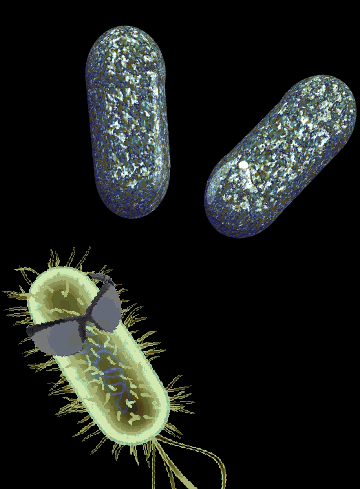Superbug evolution watched

Acinetobacter baumannii is a pathogen that creates serious problems in hospitals throughout the world. It causes opportunistic infections in the bloodstream, urinary tract, and other soft tissues, accounting for as much as 20 per cent of infections spread in Intensive Care Units.
Macquarie University’s Anahit Penesyan and colleagues have looked at the evolution of Acinetobacter baumannii’s defence mechanisms, and found them to be alarmingly impressive.
Most bacteria do not just float around by themselves, they attach to each other, and to surfaces, with ‘biofilms’.
This makes them stronger as a whole than the sum of their parts.
The added strength becomes even more sinister when the group exposed biofilms of Acinetobacter baumannii to low levels of two antibiotics – ciprofloxacin and tetracycline – for three days.
These were chosen because the bacteria have only a low level of resistance to them, unlike some other antibiotics.
By the end of three days, the bacteria were already demonstrating consistent increases in antibiotic resistance.
Of random biofilm isolates exposed to ciprofloxacin, 93 per cent showed at least two-fold increased resistance towards this antibiotic, with 76 per cent of those having at least a four-fold increase in resistance.
Some 80 per cent of ciprofloxacin-exposed isolates also showed increased resistance to tetracycline, with one-third of them showing at least a four-fold increase.
That means that these isolates would require double, quadruple, or even higher concentration of antibiotics for their effective control. This is often impossible and unsafe.
Much the same thing happened with the biofilms exposed to tetracycline.
When the isolates were tested for susceptibility to erythromycin – an antibiotic with a different structure and function from the antibiotics the biofilms had been exposed to, many that showed increased resistance towards ciprofloxacin and/or tetracycline were also resistant towards erythromycin.
In other words, cells are becoming resistant to multiple antibiotics (multidrug resistant) when exposed to low levels of antibiotics in their natural, biofilm, state.
The majority of biofilm derived cells also gained an increased capacity to form biofilms, thus further strengthening their resilience.
These findings are a disturbing indication of what could be occurring in biofilms within infections, when they are exposed to antibiotics.
They also have ramifications for antibiotic waste management. Low levels of antibiotics released into the environment may cause similar effects in biofilms growing in natural waterways, which may then spread antibiotic resistance still further.
“We need to think how we use antibiotics in the future, so we don’t make superbugs an even greater threat,” the experts say.








 Print
Print